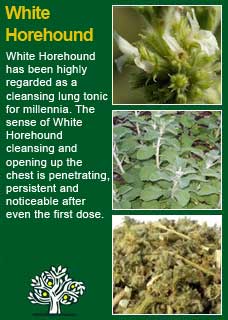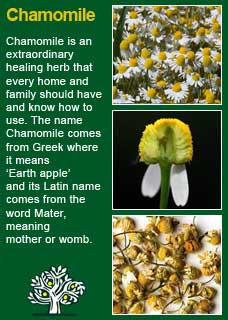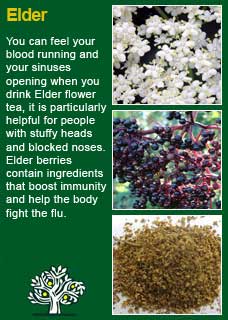
|
|
||||
| Our Pages ABOUT CONSTITUTIONAL MEDICINE
|
In herbal medicine we use the small, narrow leaves and flower tops of Hyssop, a perennial shrubby-looking herb with slender, stiff stems that grow to nearly a meter tall. Lovely blue-purplish flowers appear from summer into early autumn and the whole plant has a strong, characteristic odour and taste.
The book of Psalms (51:9) says 'purge me with hyssop and I shall be clean'. Hyssop is a name of Greek origin from azob (holy herb) because it was used for cleansing sacred places. The Greek physician Dioscorides prescribed the herb in tea for 'cough, wheezing and shortness of breath'. The German abbess/herbalist St Hildegard of Bingen wrote that 'Hyssop cleanses the lungs', she also recommended a meal of chicken cooked in Hyssop as a treatment for sadness. Nicholas Culpeper said of Hyssop that 'it expelleth tough phlegm and is effectual for all griefs of the chest and lungs' he also states that 'it killeth worms in the belly'. Jewish priests used Hyssop to clean their temples and other places of worship and for many centuries in Europe Hyssop leaves were a favoured 'strewing herb' to freshen the air at a time when people rarely bathed and farm animals often shared human living quarters! When bathing became popular and strewing ceased Hyssop was still placed in scent-baskets in sickrooms. The great American poet Walt Whitman (1819-92) was also an orator who greatly depended on his voice being in working order! When Whitman suffered from periodic lung inflammations, sore throats and laryngitis his favoured remedy was to sip very warm Hyssop tea. T.J Lyle writes it is 'a diffusive aromatic, stimulating and relaxing, with mild tonic properties... it promotes expectoration, relieves asthmatic coughs, and may be employed in colds with soreness of the chest. It is often employed in gargles for quinsy and ordinary sore throat' The British Herbal Pharmacopoeia (BHP) describes the actions of Hyysop as 'expectorant, diaphoretic, sedative, carminative'. It says it is indicated for 'bronchitis & chronic nasal catarrh' and suggests combining it with White Horehound for bronchial catarrh or with the flowers of Calendula in childhood fevers. It recommends a dose of 2-4 grams or by infusion and the tincture at 1:5 in 45% ethanol at a dose of 2-4 mls. Hoffmann adds the actions of also being an antispasmodic, nervine and anti-inflammatory. He says it 'has an interesting range of uses, largely attributed to the antispasmodic action of its volatile oil. The herb is used for coughs, bronchitis, and chronic catarrh. It's diaphoretic properties explain its use for the common cold and as a nervine it may be taken for anxiety states...' Robin Rose Bennet writes that 'Hyssop if my oldest and foremost ally for helping people heal from bronchitis. I've found that it will safely help adults and children to expectorate even the most entrenched phlegm stuck in the bronchia and cilia of the lungs from chronic bronchitis. It is one of the first herbs that taught me that when you need something, it will taste good to you!' Maude Grieve writes that 'Hyssop admirably promotes expectoration and in chronic catarrh its diaphoretic and stimulant properties combine to render it of especial value'. She goes on to say 'Hyssop tea is also a grateful herb, well adapted to improve the tone of a feeble stomach'. Sharol Tilgner says Hyssop is 'specific for chronic low-grade fevers with a rapid and flooding pulse and that it is especially useful for children's respiratory and digestive infections' Simon Mills describes Hyssop as 'especially useful for colds and respiratory infections in children and to help manage influenza attacks'; he also sees it as being good for those of a 'tense or nervous disposition'. Thomas Bartram says that Hyssop will induce a heavy sweating during a fever and that it will increase blood pressure in those who are hypotensive. He lists Hyssop for 'bronchitis, colds, chills, catarrh and sore throats. He also notes that is has been used for 'hysteria, anxiety states and petit mal epilepsy'.
~ Hyssop has an array of volatile oils, terpenoids and resins, any combination of which may be contributing towards its medicinal action. We do know that one of the ingredients of Hyssop is marubiin which has been established to have an expectorant action to loosen up phlegm so that it can be coughed up more easily. ~ Hyssop has been reported to have an antiviral action against the herpes virus (E.C Hermann, Jr., & L.S. Kucera, Proc, Soc, Exp. Biol. Med., 124, 874) ~ The authors, titles and the 'where-and-when' published of over 20 further studies and articles on Hyssop are listed in a PDF found here
For some years now, against this proven and safe way of herbalism, there has been a rising tide of excessive caution and scare-mongering in many parts of the world. The same authorities that, not so long ago, decried herbal medicines as ineffectual, have now taken up a different adversarial position; that they are dangerous substances that should only be prescribed by Doctors, who of course have zero training in them. Unfortunately, the same unnecessary fear and worry has crept into many natural health websites and popular publications on herbs. Herbs that we have safely used for thousands of years, that have no reports of adverse reactions in the medical literature despite widespread use by millions of people, are suddenly described as contraindicated because of something that should have been seen as completely unimportant, or at the utmost a merely theoretical concern, such as a laboratory study on one of the herb's constituents to use an all too common example. I wonder sometimes if the writers of such articles feel that the herb will be more deserving of respect if it is thought to be a little bit dangerous, in other words more like a drug than something that has simply come out of the earth and been used by ordinary people for generations beyond count. There is just so much misinformation about herbal medicine on the internet now. Ludicrous claims and cautions abound in equal measure; it seems like one group are trying to make money out of the public whilst the other are busily trying to scare them off. I have to believe that the kind of reader who takes the time to read pages on herbs that are as extensive as this one is much less likely to be swayed by marketers or misinformers. I hope that you will keep your wits about you if you get conflicting opinions from people who have never really got to know these herbs, who have never worked with them, or learned how to use them safely and effectively. I want to remind you that the reason that herbs can never be patented and owned by any individual or corporation is because they are, and always will be, the People's medicine. They belong to all of us and it is my great hope in sharing this work that you will learn how to use them wisely for yourself, and the people you care for. Be safe, but do not be afraid.
For my patients, young or old, who have become caught with a chest infection that they cannot shift I rate Hyssop very highly in how it can break down that deep sticky mucus that no amount of coughing seems to be able to shift. Even in just one or two days of using some strong doses of Hyssop you can see the condition quickly moving forwards. I also like it very much for children or young adults who are in a state of flu but not quite getting their temperature up enough to break the impasse. Used in such cases it may quickly bring things to a head and relief can be seen to follow soon after. Although we do make a tincture with it the majority of my personal experience has been with Hyssop as a tea. I don't know how it works or what it is but there is something in the Hyssop that works deep within the chest to relax and loosen that which has become 'stuck' - and somehow this property of the herb seems to work best with plenty along with plenty of water. Hyssop combines especially well with White Horehound to cleanse the lungs and bronchial tubes and with Chamomile and/or Elder flowers for fevers or flus
This would make a combined 120gms of herbs, a large jar that would give enough medicine for a one-week course at a full-strength adult dose. More or less of the tea could be made with similar proportions of the herbs as required. The taste will be strong but, as people can usually feel it helping right away, it is manageable and It will be ok to add some honey if this is preferred. A 10 minute infusion in freshly boiled water in a covered vessel will be ample but the time to draw the tea could go up to 15 minutes if the person had no difficulty with taking it. Approximately 3 cups of water, or about 700-800mls, is about right for how much liquid will be needed to extract 18-20 grams of the herbs. Or you could make one large cup to about 6 or 7 grams three times a day to get the same efffect. Sip the tea whilst hot or let it cool before drinking, whatever the patient prefers.
Much of the information here about the traditional uses of Hyssop is consistent with the model of thinking whereby one may treat problem A with plant B. There is value in this approach, especially in how it helps us pass on useful knowledge to one another, but it falls short in one vital area; and that is that people are not all cut from the same cloth! Something that works brilliantly for one person may do less for another -- why is this? Part of the reason is that people vary in their constitutions as to whether they are either hotter or cooler and, at the same time, either dryer or damper. This useful and rather fascinating subject is introduced further here Another big part of using the right herb when it is most needed comes from understanding the need to treat what is going wrong for the person that had led up to their getting a health condition. In this light, Hyssop can particularly offer its benefits when a cleansing action is needed in the 'cycle of healing', more about this here
Please understand that I cannot advise you, including on products or dosage, without seeing you in person in my clinic but for ideas
on how you might find a good herbalist in your area read here |
|
|
© 2011 R.J.Whelan Ltd










